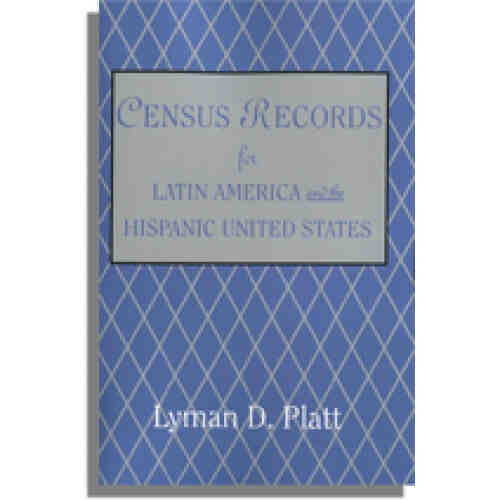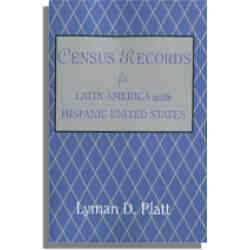This is the largest and most complete survey of census records available for Latin America and the Hispanic United States. The result of exhaustive research in Hispanic archives, it contains a listing of approximately 4,000 separate censuses, each listed by country and thereunder alphabetically by locality, province, year, and reference locator. The enormous number of census records identified by Dr. Platt in the course of his twenty-five-year investigation will surprise and delight the serious researcher, and none more so than the family historian researching his Hispanic roots.
In every colony of the Spanish Empire at least one major census was taken during the colonial period (1492-1825), although not all of these documents have been preserved. However, the stream of colonial reports on local population submitted to Spain for administrative, fiscal, military, and religious purposes swelled to a flood as the Spanish colonial administrative apparatus was reformed and expanded during the Intendency Period (1763-1825). The amount of material available to genealogists and family historians during this period of time is the largest accumulation of demographic information available for any major region of the world.
Beginning in the late 1700s the Council of Indies, the administrative arm of the Crown in Spain, initiated an Empire-wide project of population management through systematic and regular census reports. All persons in a given area, together with information about their age, sex, residence, and marital status, were to be listed, by name, usually within family grouping, showing an implied or written relationship to the head of the household. The women were almost always recorded in these listings with their maiden names, as is common in all Latin American records.
The first series of censuses beginning in 1776 resulted from orders issued to both civil and ecclesiastical officials that each take separate counts. The results were sporadic, but they were fairly extensive, and a large number of them have survived in one archive or another in Latin America or Spain. Many have been microfilmed by the Family History Library of the LDS Church in Salt Lake City, and they are identified here by film number. The largest number of censuses identified in this study, however, are those of the 1790 time period.
While the majority of census listings are for Mexico, all countries of Spanish North America,
Central America, and South America are covered. The modern states of California, Arizona, New Mexico, and Texas are found here under Mexico because they belonged to Mexico during the period in which most of the censuses were taken. Florida and Louisiana, on the other hand, are separate because of their loose ties to Mexico. Notwithstanding the Mexican emphasis, anyone even slightly interested in identifying the early inhabitants of Latin America and the Hispanic United States will find this book absolutely indispensable.


